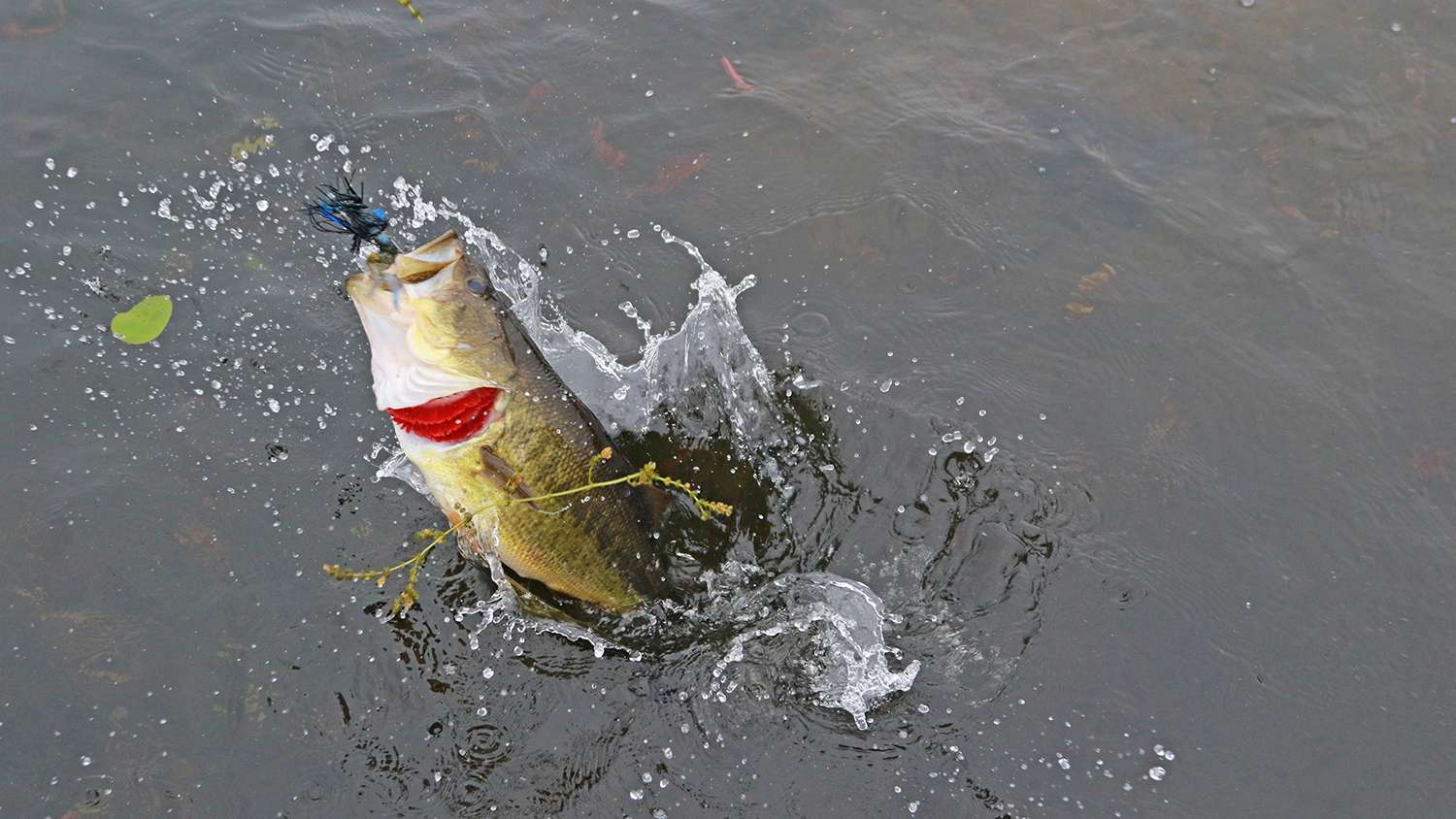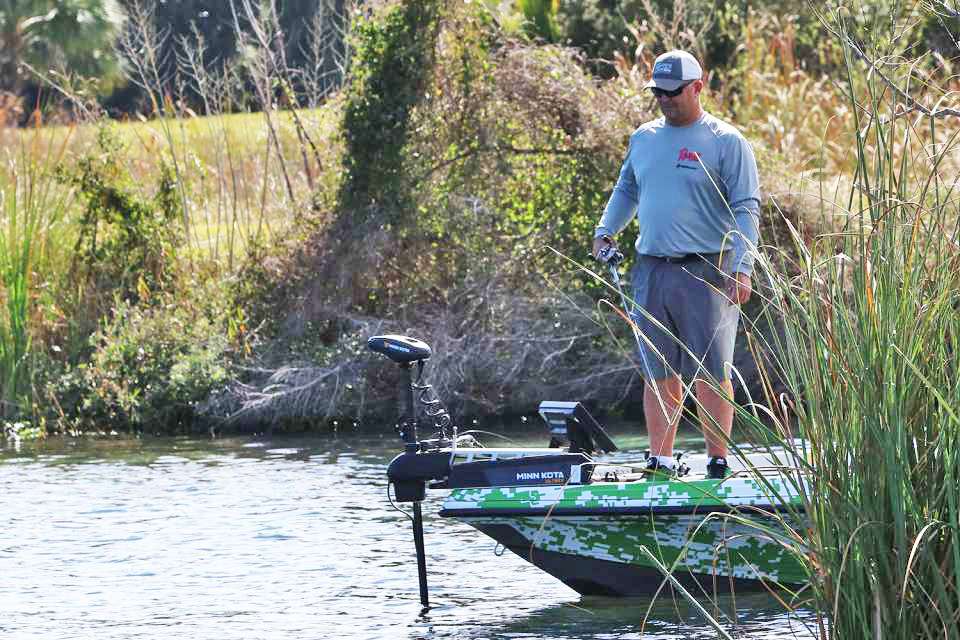
While much of the southern U.S. is just now nudging into the prespawn, Florida has already enjoyed an early jump on the spawning season. Clearly, a benefit of the state’s tropical-to-subtropical climate, it’s not always a cake walk, so understanding a few key points will help you harvest the potential.
Right off the bat, understand that, despite their jaw-dropping performances, Florida-strain largemouth bass are a delicate lot given to moody defiance. They don’t handle change well and shifting conditions can quickly send them into full-on pouting mode. The cold front that impacted the 2020 Elite Series opener on the St. Johns River demonstrated as much.
Nevertheless, Sunshine State stick Koby Kreiger knows the potential for finding big fish up shallow far outweighs the Florida bass’ temperamental nature. To this end, he offers a handful of insights into maximizing the opportunity.
Timing matters
Stretching about 447 miles north to south, Florida sees a broad range of spawning schedules. Weather patterns influence the game, but Kreiger said it’s also important to consider the state’s spawning progression.
“In the southern part of the state, the earliest you’re going to see the bass spawning is mid- to late-October and the latest you’re going to see them spawning is mid- to late-April,” he said. “North of Orlando, that’ll be January through May.”
Consistent warmth aligning with full and new moons, Kreiger said, is the key to spurring Florida’s early spawns, but he makes two notable observations:
1) Florida weather typically moves efficiently, but the unfavorable stuff provides a necessary interruption.
“A cold front in South Florida normally lasts maybe two days and then it warms back up. It affects the fish more in Northern Florida, but the cold front doesn’t last nearly as long. A cold front gives the fish a break because it gives fishing a break — most people don’t want to fish during a cold front.”
2) While it sounds counterintuitive, Florida actually needs the cold fronts to kick start the early spawns.
“The water gets quite warm (in the mid to lower region) and then it starts cooling off at the start of September. The water has to get down to around 70-degrees for the fish to want to come in and spawn. If we have really hot weather without the cold fronts, the fish don’t seem to move in; they stay in summer patterns. Once we get a good cold front to lower water temperatures and then the water warms back up, you’ll see a big wave of fish come in.”
Productive tactics
Unlike states of upper latitudes, where fish move with nearly military precision, Florida’s spawning waves often occur in a more gradual manner, with some of the fish spawning multiple times. All this to say that Florida’s spawn not only starts earlier, it can — across different regions — last throughout much of the year.
Knowing that he could potentially encounter spawners nearly anytime, Kreiger keeps a Boy Howdy prop bait, a swim jig, a Gambler Big EZ swimbait and an unweighted 5-inch V&M Chopstick on deck. Backing up those moving baits with a subtle stick worm allows him to cover water for unseen spawners and target specific spots like isolated grass and reed heads.
In any case, Kreiger notes that Florida’s dark, tannin-stained waters often limit traditional bed fishing tactics. In some regards, this may serve to balance the shallow water abundance and lessen direct engagement.
“The dark water makes it harder for a lot of people to see them, so as far as actual sight fishing, a lot of people may choose not to do it just because of the color of the water,” he said. “That’s why you see a lot of people using reaction baits that (irritate) bed fish.

“I do more blind casting to likely spawning areas, and I follow up with that V&M Chopstick. Anytime you have a hit or you miss one, the best thing you can do is throw a stick bait in there and dead stick it.”
Kreiger said color options are fairly simple in his home state’s dark waters. “In the state of Florida, there’s Junebug, black/blue tip and watermelon red. Pack those three colors, and you’re good no matter where you are in the state.”
Different behaviors
While Florida actually does have several deep sinkhole lakes, as well as those positioned on the Highland Ridge, the state’s mostly shallow, bowl type lakes tend to see relatively brief spawning visits. For one thing, the fish typically live closer to their spawning grounds than those in deeper reservoir lakes, so there’s less travel — which means more flexibility.
“I think the Florida bass come and go more frequently because they spawn in such shallow water,” Kreiger said. “They come and do their business and, either because of the shallow water or boat pressure, I think they leave a little faster than in other parts of the country. Because of the shallow (environment), there are more places for them to hide than sitting on the bed.
“You’ll see that a lot in tournaments; one day they’ll catch them pretty good in an area and then the next day, those weights drop drastically. With all the shallow water boat pressure, I think the fish get spooked, and they leave.”
Clarifications
With more than four decades of observation guiding his insights, Kreiger keeps his finger on the pulse of, not only bass fishing, but the perceptions thereof. In many cases, anglers don’t know what they’ve got.
“A lot of people don’t realize they spawn for so long in Florida,” Kreiger said. “Also, most people who come to Florida and fish, whether they plan to or not, are catching fish off the bed. Most of the time, if you fish in Florida from January to the end of April, you’re going to be catching fish off the bed.”
Another tip from Kreiger: Have patience. These Florida fish can be awfully particular, and they like things a certain way.
“If it’s a cool Florida morning, don’t get discouraged,” Kreiger said. “Wait ’til after 11 o’clock or so and you’ll get a lot more bites and see a lot more fish being caught.”





